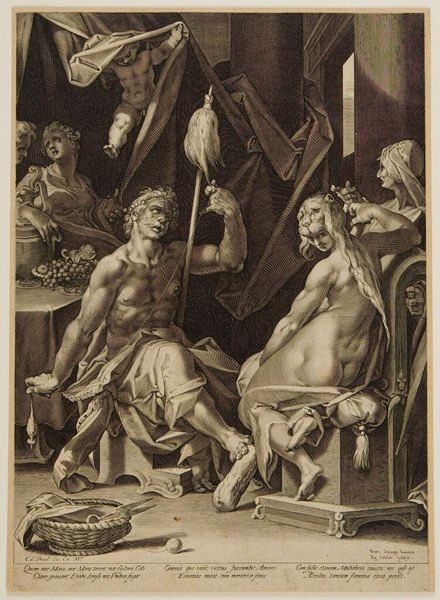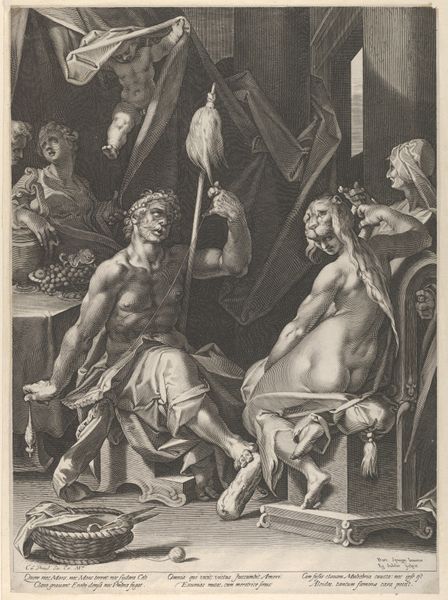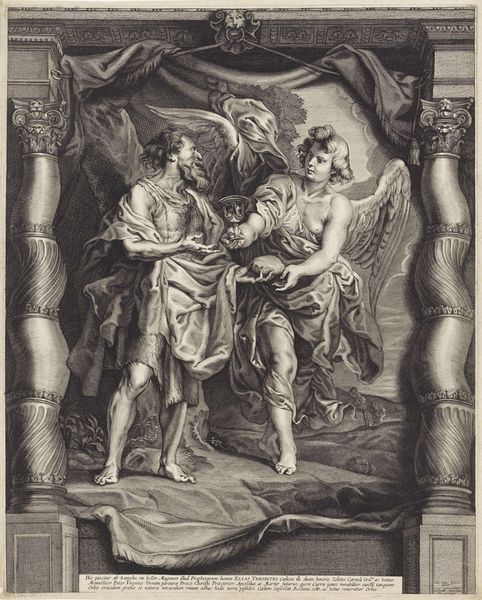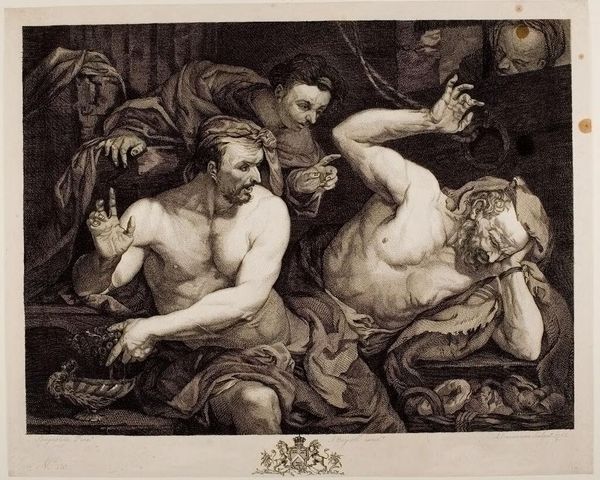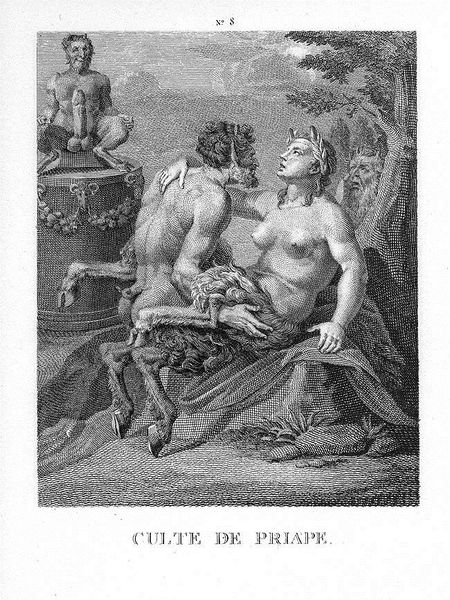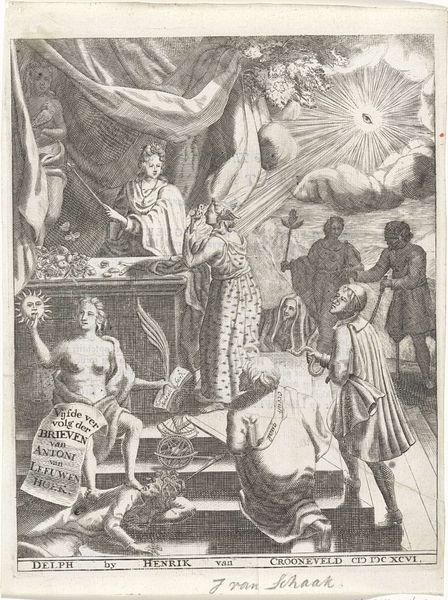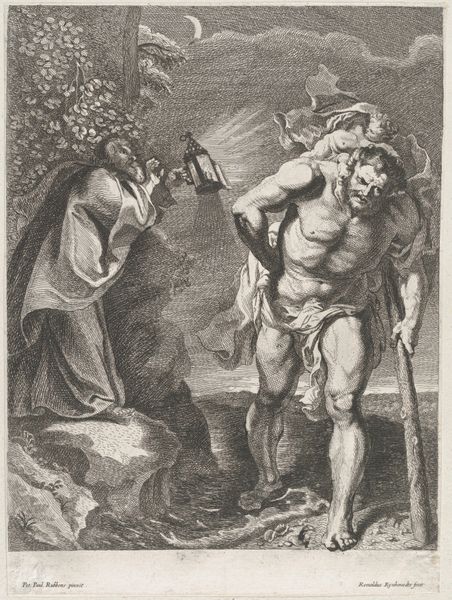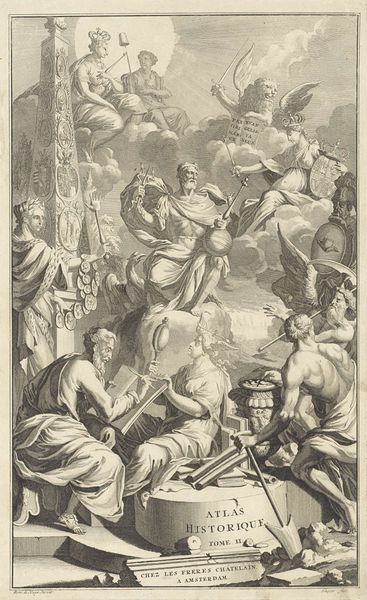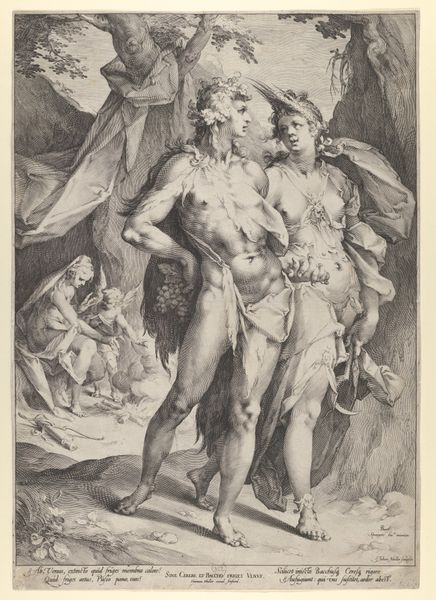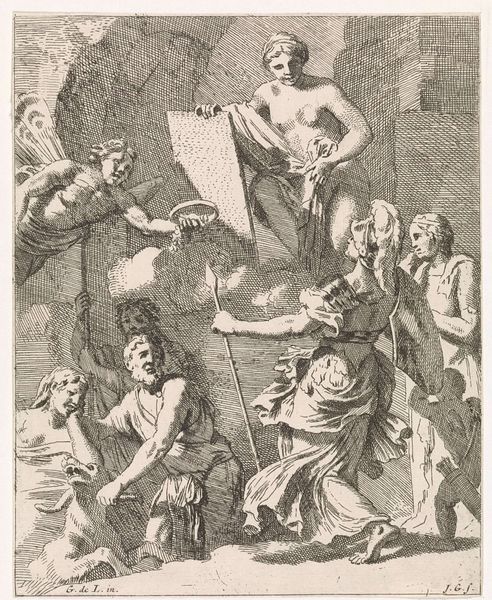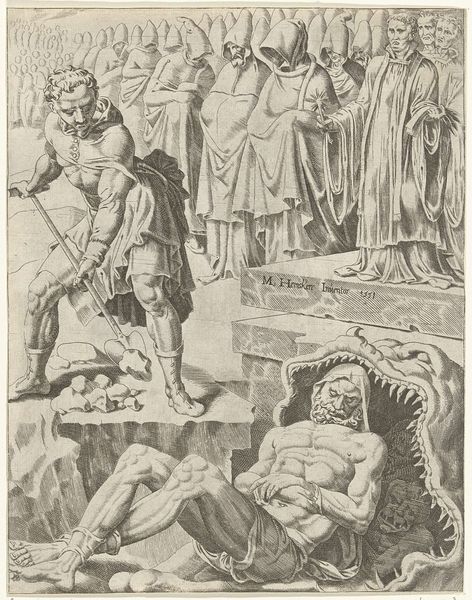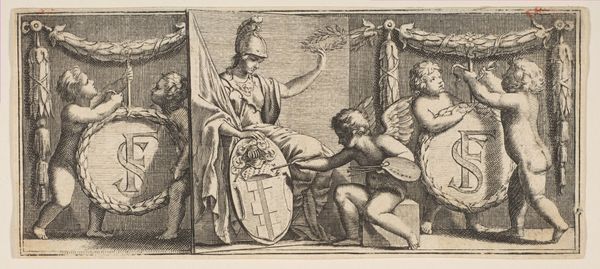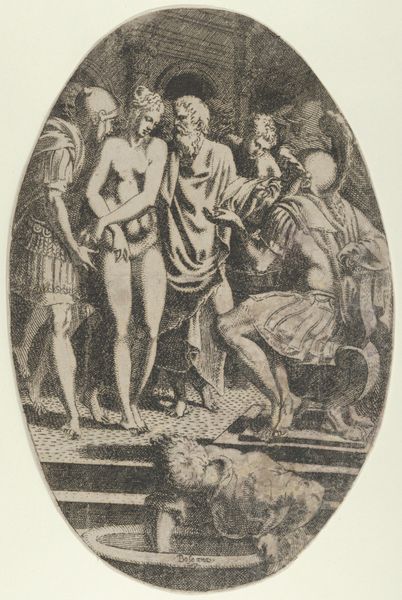
drawing, print, paper, ink, engraving
#
drawing
# print
#
mannerism
#
figuration
#
paper
#
ink
#
history-painting
#
italian-renaissance
#
nude
#
engraving
Dimensions: 441 x 318 mm (plate); 446 x 324 mm (sheet)
Copyright: Public Domain
Curator: Aegidius Sadeler II created this engraving around 1600. It’s titled "Hercules and Omphale" and portrays a moment from Greek mythology. Editor: The overwhelming impression is one of...surrender, wouldn't you agree? A palpable submission radiating from Hercules in particular. Curator: Yes, there is certainly a reversal of power dynamics presented. Notice how the Mannerist style accentuates the artificiality of the scene through its exaggerated poses and stylized forms. Look at Hercules; he's traditionally a symbol of virile strength, but here, he's holding a distaff, dressed in feminine attire. Editor: Exactly. This depiction challenges patriarchal norms by showcasing a moment of vulnerability in a traditionally masculine figure. It reflects themes of gender fluidity, and the subversion of expected roles within the narrative of power, and what the consequences might be when one doesn't submit. Curator: It’s crucial to acknowledge the artistic composition here. The way Sadeler uses light and shadow creates a dramatic effect that emphasizes the characters' emotions and their interplay. The gazes are carefully arranged to direct the viewer's attention. Editor: But it’s not merely about technique. Placing this artwork in its socio-historical context, we see the reinforcement and the questioning of courtly love tropes of the period. The symbolism is blatant – the lion's skin worn by Omphale as a sign of dominance, Hercules's traditionally muscular form almost diminished by his pose and garments, rendering a commentary on class as well as gender. Curator: One might see it less about dominance and more as symbolic of transformation and the effects of love, represented by the cupid in the top portion of the frame. It is the force that alters our usual expectations. Editor: Perhaps both perspectives hold value. I’d challenge the way the engraving participates in a male gaze that has an implied and active spectator taking in and judging Hercules and Omphale's moment, thus making their intimate role reversal almost farcical. Curator: Indeed, this analysis reminds us of the necessity for diverse interpretations of this image and a nuanced approach to formal analysis. Editor: Absolutely, bringing into the dialogue philosophical, feminist, and historical approaches creates a more textured and rich experience.
Comments
No comments
Be the first to comment and join the conversation on the ultimate creative platform.
